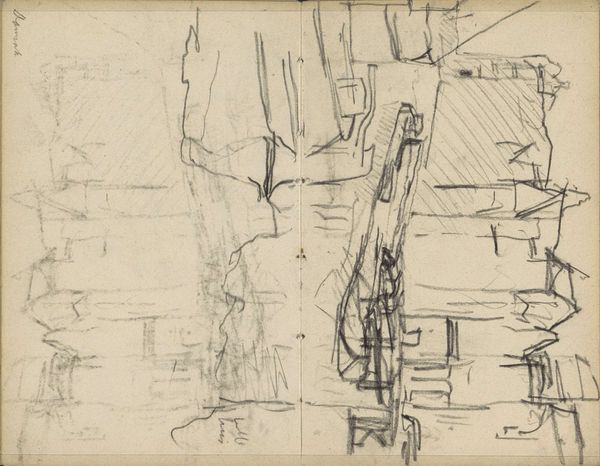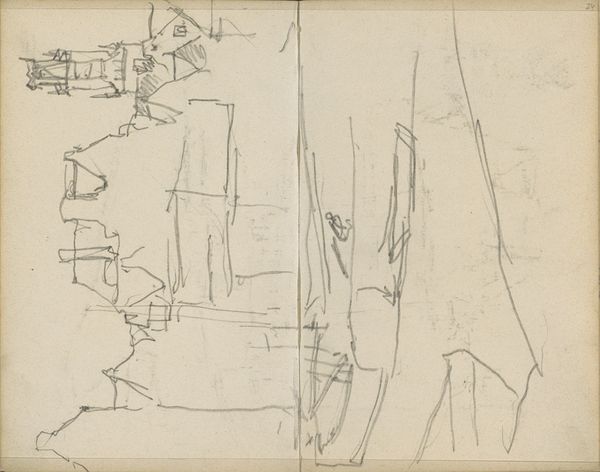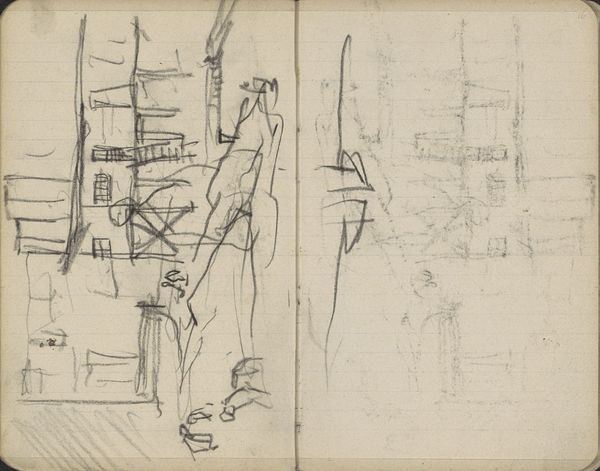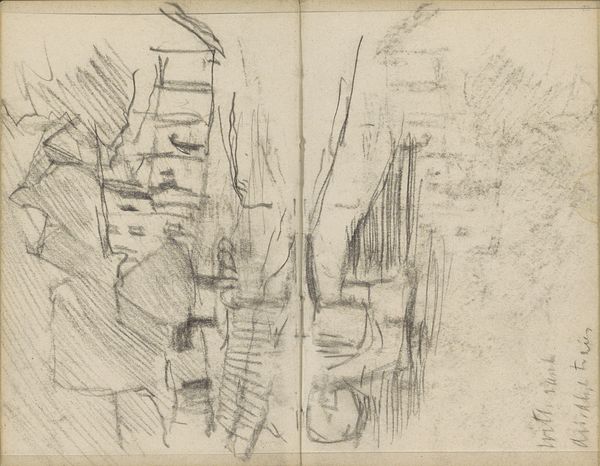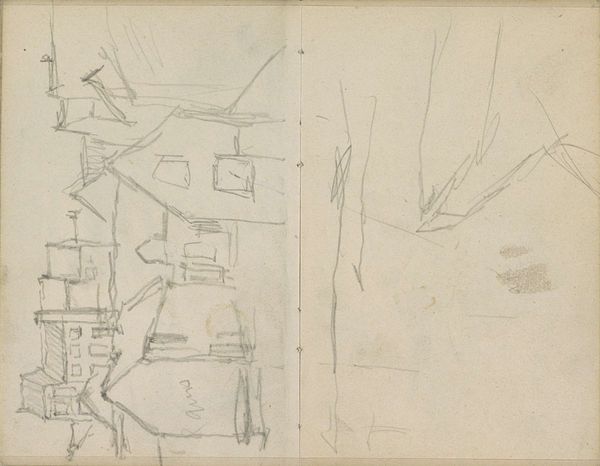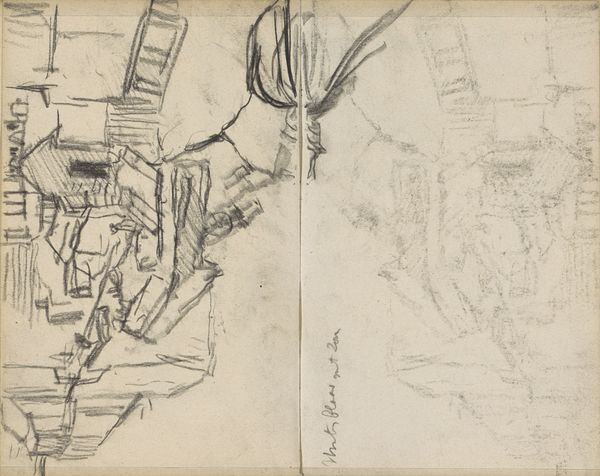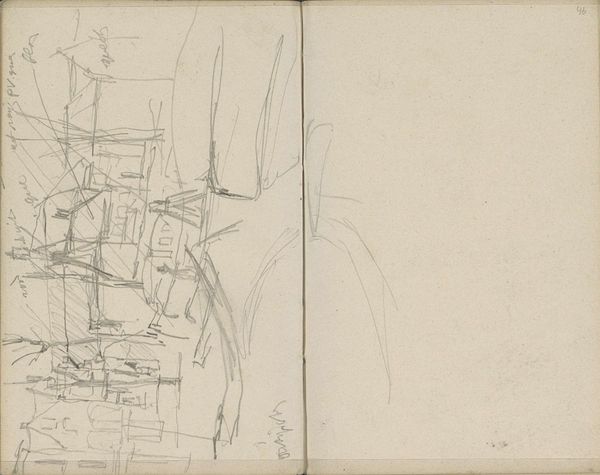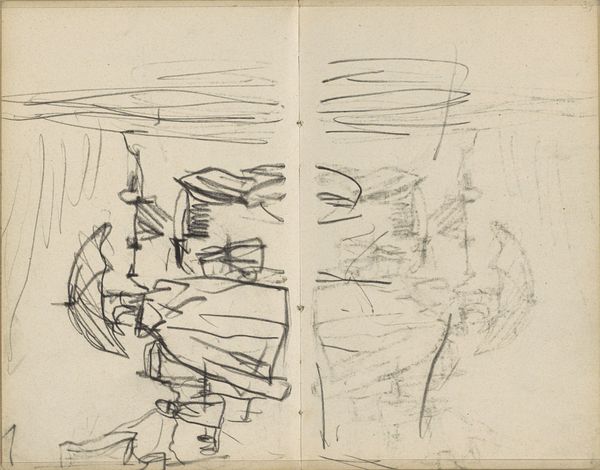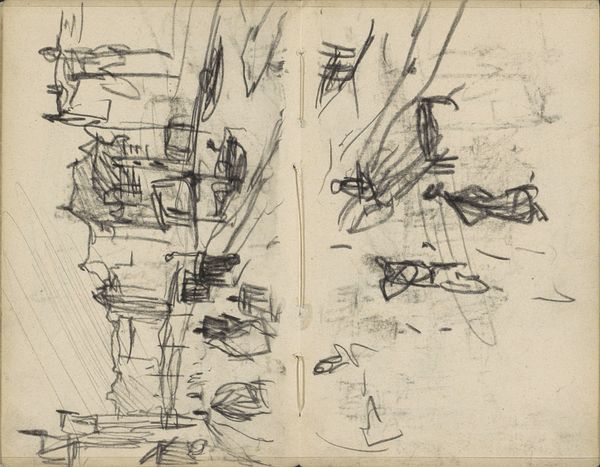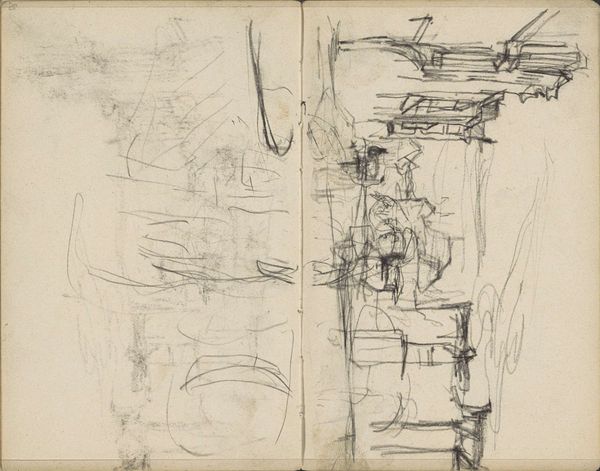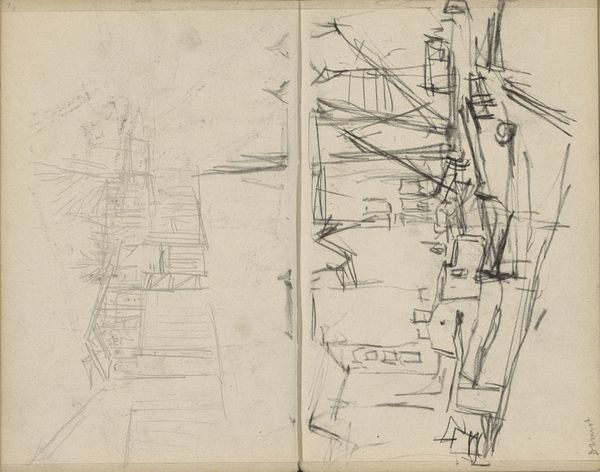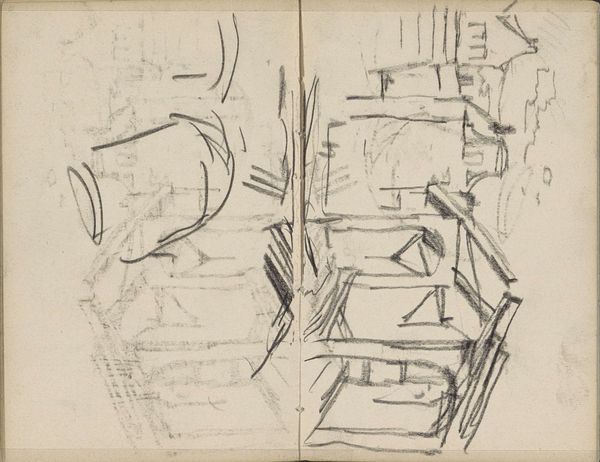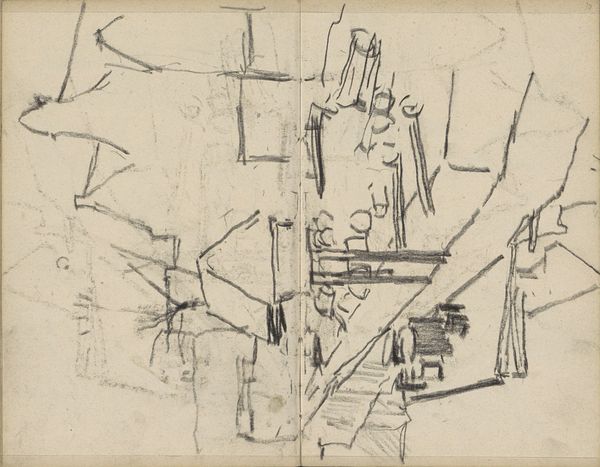
Copyright: Rijks Museum: Open Domain
Curator: This sketch really whispers secrets. It’s so raw, you know? Almost feels like a stolen glance. Editor: It’s definitely an immediate record, George Hendrik Breitner’s "Twee gezichten in Amsterdam," dating from around 1886-1908. A pencil drawing on paper, housed right here at the Rijksmuseum. Curator: I'm really drawn to the economy of the line! There's almost a frantic energy—like he was desperately trying to capture a feeling before it slipped away. That building feels precarious! Editor: Right. We’re seeing Breitner at work here – the means by which he represents the rapidly modernizing cityscape. His urban scenes reveal Amsterdam's constant state of flux and the labour and materials involved in its construction. Curator: It’s like a stage set! I mean, there’s drama, a bit of unease too. A feeling of figures in transit, you can sense the social dynamics at play without knowing their specific roles or destinations. It gives the city life. Editor: Breitner had a clear artistic program – to challenge conventional boundaries between traditional artistic renderings of architecture with snapshots from a contemporary, moving metropolis. So that informality, it's deliberate. Curator: Definitely feels like "street photography" almost, capturing real life at it happens! I appreciate the open composition; your eye wanders. It invites imagination, I think. It feels incomplete in the best way. Editor: Precisely, we’re privy to a record, but the medium reveals the labor: cheap pencil and paper for these candid glimpses into a changing city, where the materiality reflects broader economic accessibility. Curator: Well, I walked away thinking about all the unsung stories hiding in the corners of a busy city and the little fleeting interactions that really define that specific time and space, if that makes sense! Editor: Yes. It serves as a reminder that behind every grand facade and cultural institution, there’s a network of workers and a story of materials and the making that reflects shifts in class, wealth, and power dynamics.
Comments
No comments
Be the first to comment and join the conversation on the ultimate creative platform.
